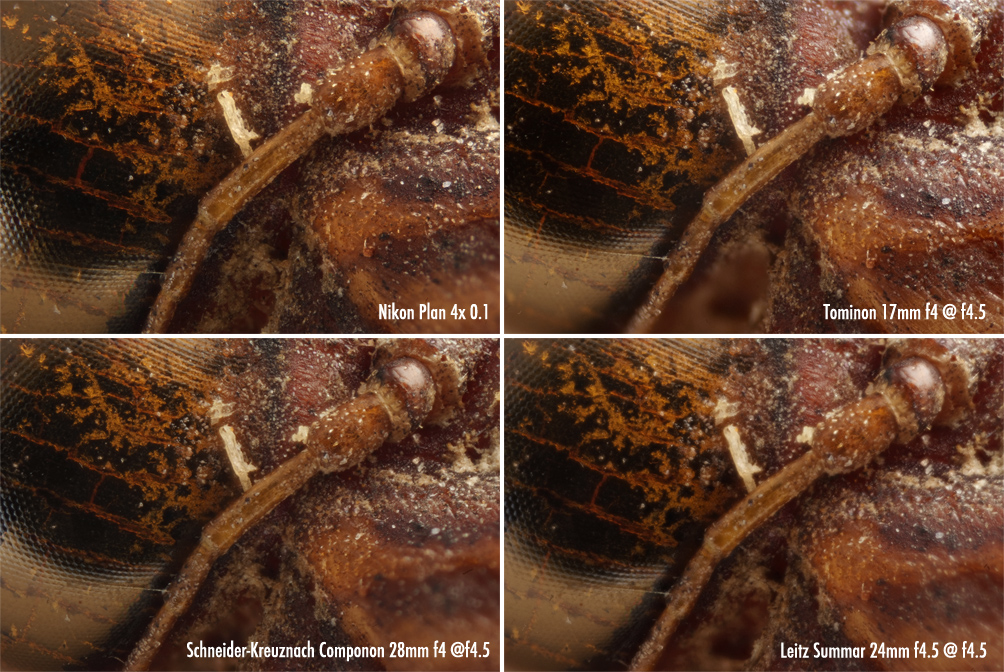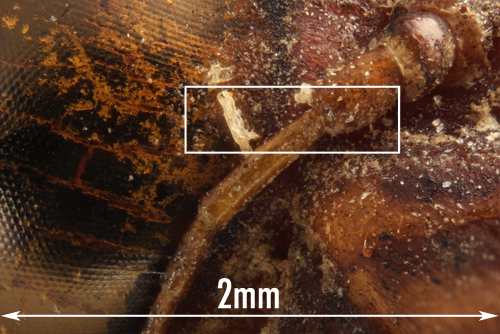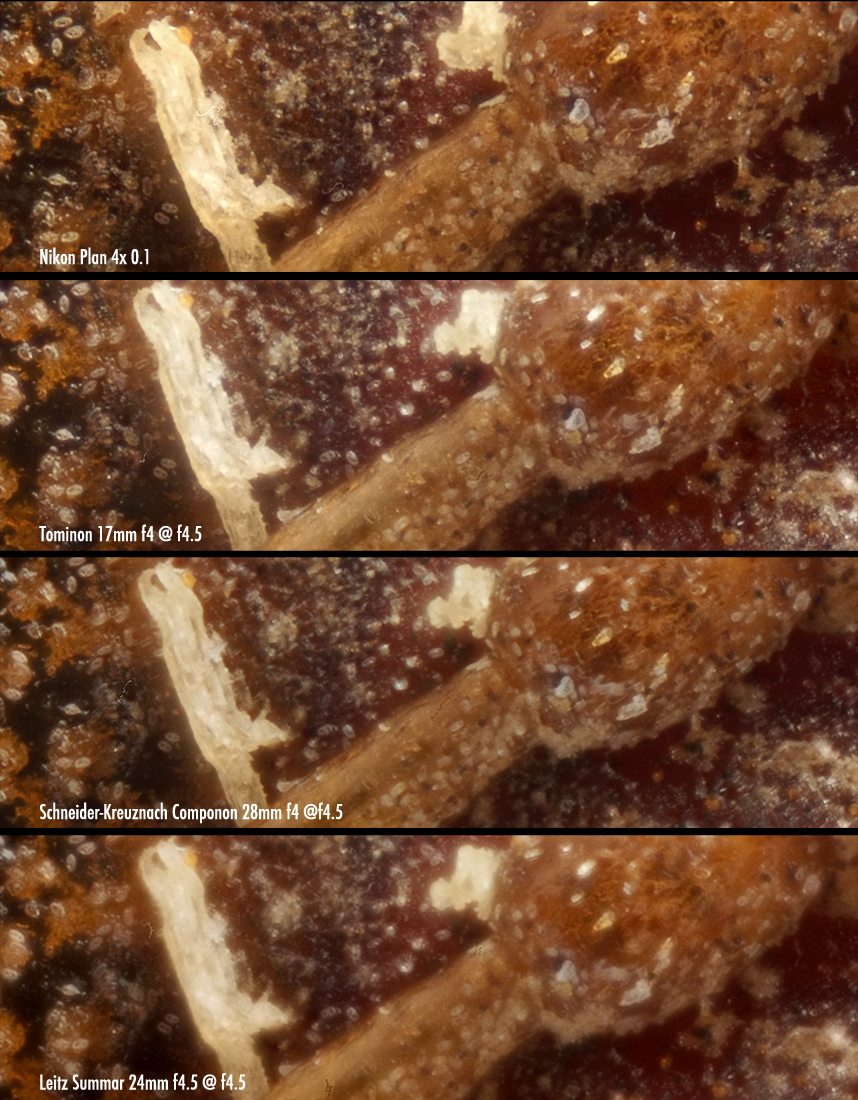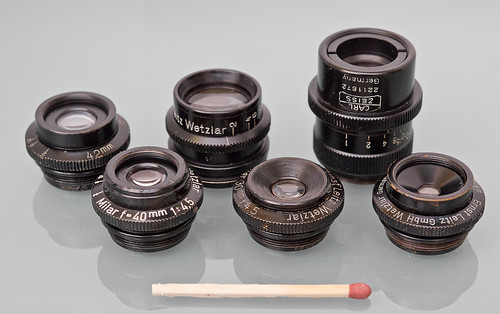


This is of course NOT a scientific test by any means. It's merely a way for me to get some sense of these lenses. I've tried to be reasonably careful but I've come to the conclusion that it's better to do several slightly sloppy tests rather than one super precise test – at least for me this seems to be more effective.
I won't go into details about the imperfections of the testing procedure – just know that they're there and keep it in mind before making any conclusions.
All images stacked in Zerene Stacker using the PMAX method. 26 frames/stack (but Nikon Plan more like 40 frames and slightly more DOF)
After stacking, I've aligned the resulting images in Photoshop using auto-align layers to counter the slight alignment and magnification differencies between the stacks. Obviously this is not the "clean" way of doing it since you are pushing pixels a little differently in different images but since I failed to see any quality loss from this procedure (I inspected it closely) I chose to do it this way.
6MP files
Nikon: http://farm3.static.flickr.com/2571/411 ... ba3e_o.jpg
Tominon: http://farm3.static.flickr.com/2763/412 ... 103b_o.jpg
Componon: http://farm3.static.flickr.com/2660/411 ... 3848_o.jpg
Summar: http://farm3.static.flickr.com/2544/412 ... 1510_o.jpg
I have very little experience with magnifications above 10x so I'm not sure if these results are in line with what is to be expected.
/John

